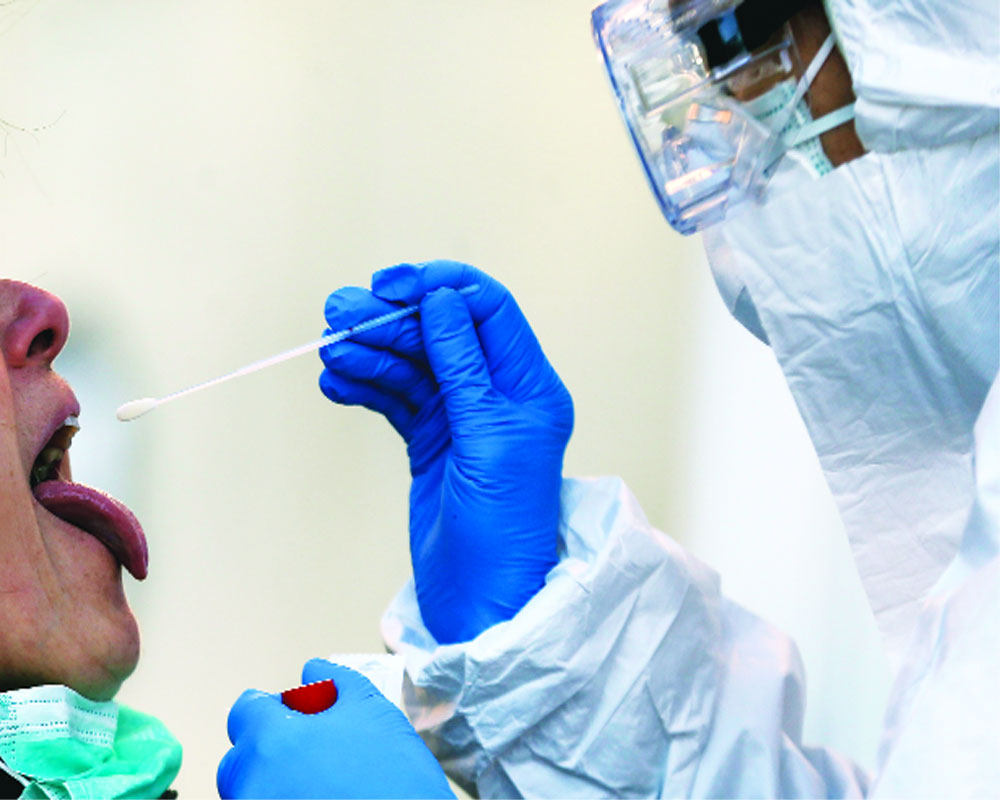A new study shows that current physical distancing guidelines provided by the World Health Organisation (WHO) and by the US Centers for Disease Control and Prevention (CDC) may not safeguard you against coronavirus infection. A research, published in the Journal of the American Medical Association warned that the gas cloud from a cough or sneeze may help virus particles travel up to 8 metres.
The existing guidelines issued by the WHO and CDC are based on outdated models from the 1930s of how gas clouds from a cough, sneeze, or exhalation spread. Study author, MIT associate professor Lydia Bourouiba, however, thinks otherwise as she says that exhalations cause gaseous clouds to travel up to 27 feet (8.2 metres).
The Centers for Disease Control and Prevention, a specialised US health agency, and the World Health Organization (WHO) has called for six and three feet (0.9 m and 1.8 m) of space for maintaining social distancing to keep at a bay the droplets of coronavirus causing deadly Covid-19.
In a Journal of the American Medical Association article published last week, Lydia said peak exhalation speeds can reach 33 to 100 feet per second (36 km/h and 110 km/h) and "currently used surgical and N95 masks are not tested for these potential characteristics of respiratory emissions.”
Lydia was doing research on dynamics of exhalations (coughs and sneezes, for instance) for years at the Fluid Dynamics of Disease Transmission Laboratory.
Her research could have implications for the global COVID-19 pandemic, though measures called for “there’s an urgency in revising the guidelines currently being given by the WHO and the CDC on the needs for protective equipment, particularly for the frontline health care workers,” A Lydia told US TODAY.
WHO's advisory suggests that "droplets can travel only short distances through the air and either land on people or land on surfaces that people later touch." This is the basis for the hygiene protocol that urges people "to wash hands frequently and not touch the face, because that could bring the virus into contact with the nose or mouth."
Lydia's research, however, calls for better measures to protect health care workers and, potentially, more distance from infected people who are coughing or sneezing. She said current guidelines are based on "large droplets" as the method of transmission for the virus and the idea that those large droplets can only go a certain distance.
Dr. Paul Pottinger, an infectious disease professor at the University of Washington School of Medicine, said questions remain about the distances at which the virus is effective.
"For me, the question is not how far the germs can travel, but how far can they travel before they're no longer a threat. The smaller the germ particles, the lower the risk that they might infect somebody who would breathe them in or get them stuck in their nose or their mouth," Pottinger told US TODAY.
WHO referred to a recent scientific brief on the methods of transmission, which recommended "droplet and contact precautions for those people caring for COVID-19 patients."
Bourouiba said she wants to see recommendations made based on current science not "policies based on supply, for example, because we don't have enough PPE (personal protective equipment)."
"Although there remains a lot of questions to be addressed about how much virus is at a given distance or not, we have no answer one way or another at this time," she said. "Therefore, the precautionary principle should drive the policies to state that we should have high-grade respirators used for healthcare workers."
"Once that's decided, that's the thrust that's needed to now mobilise most effectively the kind of tremendous high production level that is possible to reach in a great country like the United States. This thrust is not happening," she added.


























